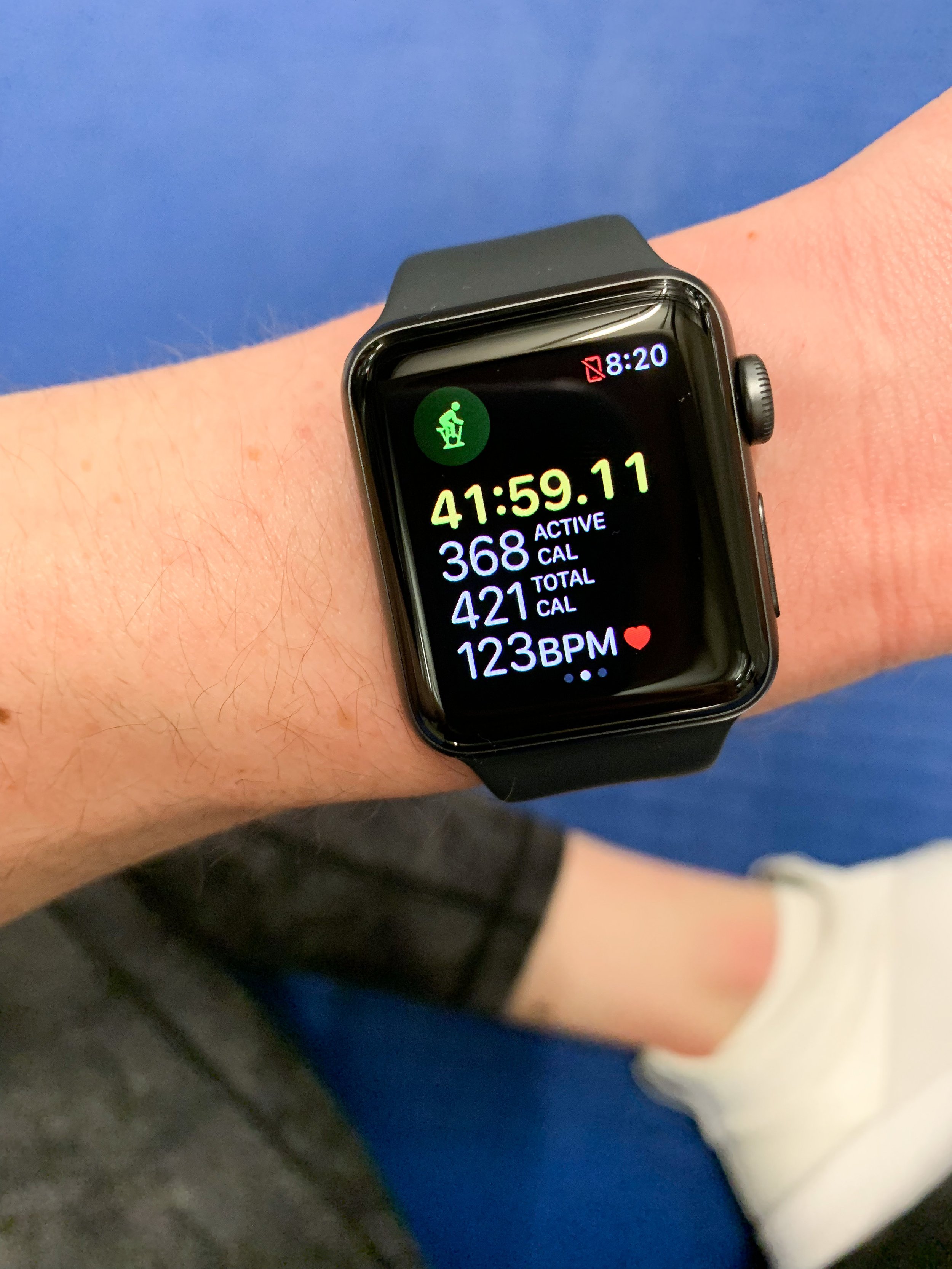The best form of any nutrition or fitness behavior is pretty much always the one you enjoy most and the one you can stick with for a long time (ideally forever). That being said, there are more effective and less effective forms of cardio to assist with fat loss and help maintain those results. Whichever form of cardio you choose, a proper strength training regimen should still be the foundation of your training (if your goal is sustained fat loss).
Circuit Training:
Circuit training is an efficient way to elevate the heart rate while resistance training, as it can crunch a challenging, full-body workout into a short amount of time. Circuit training can be done with lighter or heavier weights, or no weights at all.
TRY IT! Pick 4 exercises and set a timer for 45 seconds. Perform one exercise after the other until you’ve completed all 4. Rest for 60 seconds and repeat.
High-Intensity Interval Training (HIIT):
HIIT is the more popularized - and probably most challenging - form of cardio, involving alternating intervals of all-out effort with equal or longer periods of recovery, and repeating for any given amount of time (usually 30 minutes at most). HIIT is another efficient form of cardio that can help maintain muscle mass, and can be done with or without weights, or on a piece of cardio equipment like a treadmill, bike, stairclimber, or rower.
TRY IT! First, pick your method - weights, no weights, or cardio equipment. Then, set a timer for 30-45 seconds and go ALL OUT - this means you should not be able to speak while performing the exercise - for that amount of time. Rest for 60-90 seconds and repeat. Your working intervals should be so challenging that you absolutely need that rest interval.
Low-Intensity Steady-State Cardio:
LISS, last but not least, is a longer and slower form of cardio that keeps the heart rate lower than it would be in the first two forms of cardio. You may have heard of the “fat-burning zone”, and while this claim isn’t entirely true, LISS does tend to utilize more fats than carbs for energy because it keeps the heart rate lower and oxygen is more readily available. LISS typically involves walking - either on a treadmill or outdoors - at a brisk pace for 45-60 minutes at a time. Brisk pace means you should be walking fast, but not so fast that it’s impossible to hold a conversation or even catch your breath.
Remember - the most effective form of any behavior strategy for fat loss is the one you know you can stick with. Try each of these methods for a few weeks at a time and see your body responds. Evaluate your progress, and of course, take note of how much you enjoyed it! Keep in mind - it is cardio, at the end of the day, so you may not enjoy it as much as other forms of training ;)




























